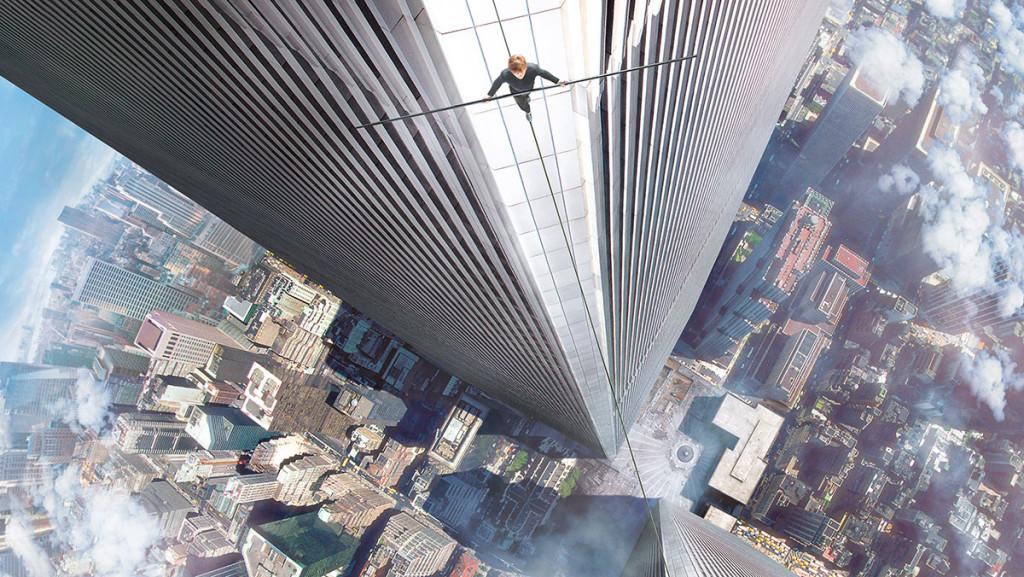Philippe Petit’s death-defying tightrope walk in between the two towers of the World Trade Center on Aug. 7, 1974, is one of the most iconic moments in New York City history. Petit christened the newly opened, but not completed buildings — which were the two tallest in world at the time — with one of the most far-fetched ideas a lonely French street performer could have. Almost as dazzling as the event itself was the effort, planning and risk it took to pull off the mystifying stunt, all of which have been portrayed in Petit’s book “To Reach the Clouds” and James Marsh’s Oscar-winning documentary “Man on Wire.” However, none have made the events as real as Robert Zemeckis did in his film “The Walk.”
First things first, seeing the movie in 3-D is a complete waste of an extra $2 that would be much better spent on a bag of Skittles. There are only two moments in the entire film where those dinky plastic glasses add any sort of aesthetic.
Zemeckis takes the viewer on a journey from Petit’s (Joseph Gordon-Levitt) days as a Parisian street performer to the inception and execution of his legendary idea, and in classic Zemeckis fashion — like in “Forrest Gump” — he uses his main character as the narrator from an outside perspective. The movie cuts back and forth between the events leading up to and during Petit’s walk, and Petit standing on the torch of the Statue of Liberty with 1970s Manhattan in the background. Similar to “Forrest Gump,” the movie revolves around one character and everything he is doing and thinking, with the narration allowing the events to flow more smoothly without forced dialogue to explain what is going on.
While Gordon-Levitt’s French accent is just short of pathetic, he does a good job portraying all of his character’s idiosyncrasies, which range from determined to paranoid with arrogance spread throughout. Gordon-Levitt brings Petit’s passion to the forefront — he has the viewer rooting for him the whole time and clearly exudes how much he believes in what he is doing.
Almost every scene features Gordon-Levitt making his “accent” more bothersome, but keeping the focus where it needs to be, which is on the crazy Frenchman with an even crazier dream. Gordon-Levitt’s omnipresence gives him ample time to show the distinct relationships Petit has with all of his cohorts and how he works to manage many personalities to work for him. Those cohorts, his “accomplices,” as Petit calls them, are a motley crew that are disjointed at times, but they are also who Petit depends on to pull off his marvelous act. While the cast of characters in “The Walk” differ slightly from Petit’s accomplices in “Man on Wire,” all of the integral pieces are there in properly telling the story.
The most important of these characters is Annie (Charlotte Le Bon), Petit’s girlfriend and confidante. She is Petit’s biggest supporter and the one who keeps his insanity under control. She balances out his energy and passion and serves as a voice of reason when his emotions are flying off the handle. The hardest working accomplice who made the back-and-forth journey between the towers possible was Jean-Louis (Clement Sibony), whose logistical mind made Petit’s dreams possible. There are also Jean-Francois (Cesar Domboy), or Jeff, who is afraid of heights and does not speak a word of English; inside man Barry Greenhouse (Steve Valentine); skeptic Albert (Ben Schwartz); and stoner David (Benedict Samuel).
Philippe Petit’s 45-minute performance in between the towers of the World Trade Center was made spectacular by its extremely illegal yet completely harmless nature. It will forever live in the fabric of New York City history and will be one of those moments that everyone in the Big Apple knows where they were when it occurred. “The Walk” portrays this iconic event well and takes viewers on an exciting ride.




















